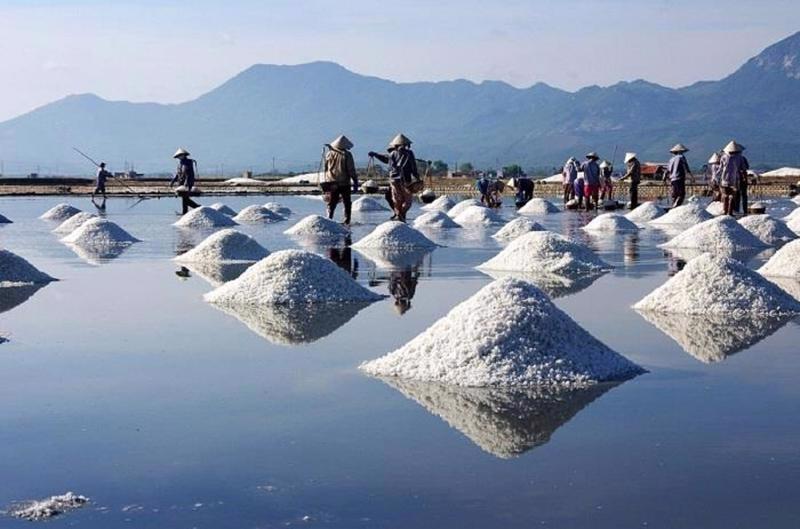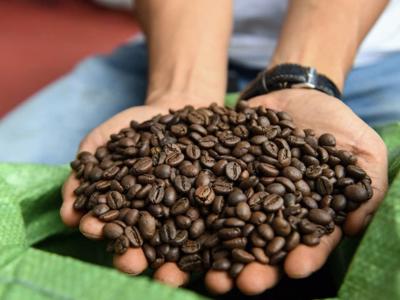Traditionally-produced salt of Vietnam
Mr. Le Duc Thinh, Director of the Department of Economic Cooperation and Rural Development at the Ministry of Agriculture and Rural Development, tells VET / VnEconomy’s Chu Khoi how traditionally-produced Vietnamese salt, despite low domestic demand, is gaining in popularity in markets like France, Japan, and the EU and what that means for local production.

Can you tell our readers about the salt-making profession in Vietnam, both now and in the past?
Salt production in Vietnam has always been closely tied to culture and the legend of the Salt Lady and the Temple of the Salt Lady in Thai Thuy district, northern Thai Binh province. There are many salt festivals in Vietnam, and the stories and traditions passed down through generations about the salt-making profession deeply reflect the spirit and identity of local regions. Along with this, since ancient times, the people of Vietnam have believed that good fortune is associated with salt, as people always say: “Buy salt at the beginning of the year.”
The government pays great attention to the salt-making profession, listing it as one of the seven important rural industries. However, salt production remains a profession of ups and downs, and it seems to be gradually losing its appeal among the younger generations. Factors such as low incomes, harsh working conditions, and the attraction of other industries have led to less interest from young people.
Though annual salt production stands at about 1 million tons, this figure is quite low compared to market demand.
Salt farmers still struggle to make a living from their profession due to the extremely low price of salt. What is your perspective on this issue?
Salt prices remain unstable because, for an extended period, they have not received sufficient attention from local authorities. Additionally, the associated infrastructure has significantly deteriorated. The canals that bring seawater into local areas are in dire need of investment. Local authorities remain cautious, however, fearing such investment may not yield effective results.
There is a widespread misconception about salt in Vietnam. Both consumers and society at large believe that high-quality salt must be white and highly purified, while traditional hand-harvested sea salt, which has a yellowish hue, is often considered impure and, therefore, priced lower than refined salt.
However, while Vietnamese consumers are reluctant to buy hand-harvested salt, traditional Vietnamese salt is highly-valued in countries like Japan and across the EU, where it can be sold for several US dollars per kilo and sometimes even more. Each year, Vietnam exports tens of thousands of tons of traditionally-produced salt at a high price. Traditional salt, such as sun-dried salt and seawater salt, contain over 160 substances and minerals, including nearly 20 essential minerals and nutrients beneficial to human health. Industrial salt and refined salt, meanwhile, lack these valuable minerals.
The government consistently protects and supports Vietnam’s salt industry by implementing policies that encourage and provide incentives for salt farmers who produce salt for consumption and food processing. The government is focusing on importing salt for industrial purposes, while imposing quotas and high taxes on this imported salt. However, there is a need for clear traceability systems to manage the salt market effectively and prevent the illegal sale of imported salt.
The government has programs and policies to attract investment into the salt industry, and many companies are exploring opportunities in the sector as a result. Can you tell us more about this?
Around Vietnam, more than 70 companies and investors are now engaged in salt processing. For example, while southern Tay Ninh province does not have a coastline, it is known for its popular chili salt products. In the Diem Dien salt fields in Thai Binh province, several organizations and individuals are exploring opportunities to link salt production with tourism. In Ca Na village, south-central Ninh Thuan province, some projects are valued in the billions of VND. And in the Mekong Delta’s Bac Lieu province, many investors have expressed interest, particularly in infrastructure and warehouse development for salt production.
The Ministry of Agriculture and Rural Development (MARD) has allocated approximately VND130 billion ($5.2 million) from the State budget to improve infrastructure for the salt industry in Bac Lieu. In addition to infrastructure development, the Department of Cooperative Economy and Rural Development has advised both the ministry and local authorities on diversifying salt products and fostering value chain links to increase the value of salt production. The ministry has also launched pilot projects in five regions and is working on expanding this initiative nationwide.
What measures is MARD taking to revive the salt industry and ensure that salt farmers are not left behind?
The Development Plan for the Salt Industry for the 2021-30 Period, approved by the Prime Minister in August 2020, recognizes salt as an essential product crucial for national food security. The program outlines the development of salt production, processing, and consumption, aiming to diversify salt products to meet domestic demand, support the food processing, healthcare, and chemical industries, and focus on exporting natural sea salt.
By 2025, the target is to maintain 14,500 ha of salt production, with an output of 1.5 million tons per year. Of this, 5,000 hectares will be used for crystallized salt production on tarpaulins, with a target of 650,000 tons, or 43 per cent of total production, while processed salt production is expected to reach 500,000 tons. For industrial-scale salt production, the goal is 4,805 ha, yielding 640,000 tons per year, or 42 per cent of total production, applying technology to boost productivity by at least 20 per cent.
The goal for 2030 is to maintain 14,244 ha of salt production, with a total output of 2 million tons each year to meet domestic demand. The program includes the establishment of industrial salt production zones in south-central provinces, and applying technology and mechanizing production, particularly in salt harvesting and washing, with the aim of raising productivity by 30 per cent and ensuring stable salt quality for industrial use. The program also seeks to fully utilize by-products such as gypsum and brine.
Several strategies have been proposed to achieve these goals. These include diversifying salt products through technological innovation, upgrading salt field infrastructure to improve productivity, quality, and efficiency, and enhancing livelihoods and incomes for salt farmers, with the long-term aim of making salt production a profitable industry.
For traditional salt production methods, such as sun-dried and dispersed water evaporation, the plan is to improve infrastructure, especially irrigation systems, and apply science and technology to increase productivity by at least 20 per cent and raise the value of salt products by at least 20 per cent compared to current levels.
Investments will be made in upgrading salt production infrastructure, machinery, and equipment linked to the market. Emphasis will be placed on developing salt products that meet domestic demand, with a focus on producing salt rich in minerals and nutrients, with low sodium chloride content, that is beneficial for human health.
The government also plans to scale up salt production models based on value chains, integrating production, processing, and consumption. Pilot projects will combine salt production with rural tourism and leisure tourism, and apply technological advances in clean salt production, as well as in producing salt with high levels of minerals and nutrients beneficial to human health.
It will also support the renovation and upgrading of salt storage facilities and encourage investment in salt preservation systems to ensure adequate reserves for production and business needs, including temporary salt storage.
The government has estimated that the total funding required for the development of the salt industry to 2030 will be about VND2.824 trillion ($112.96 million). Of this, approximately VND1.94 trillion ($77.6 million) will come from the central government budget, VND300 billion ($12 million) from local government budgets, and VND534 billion ($21.36 million) from the legal funds of businesses and cooperatives and from public contributions.




















